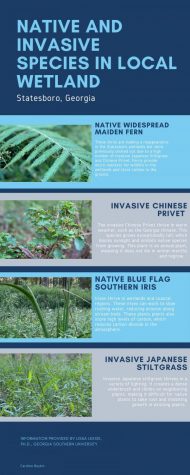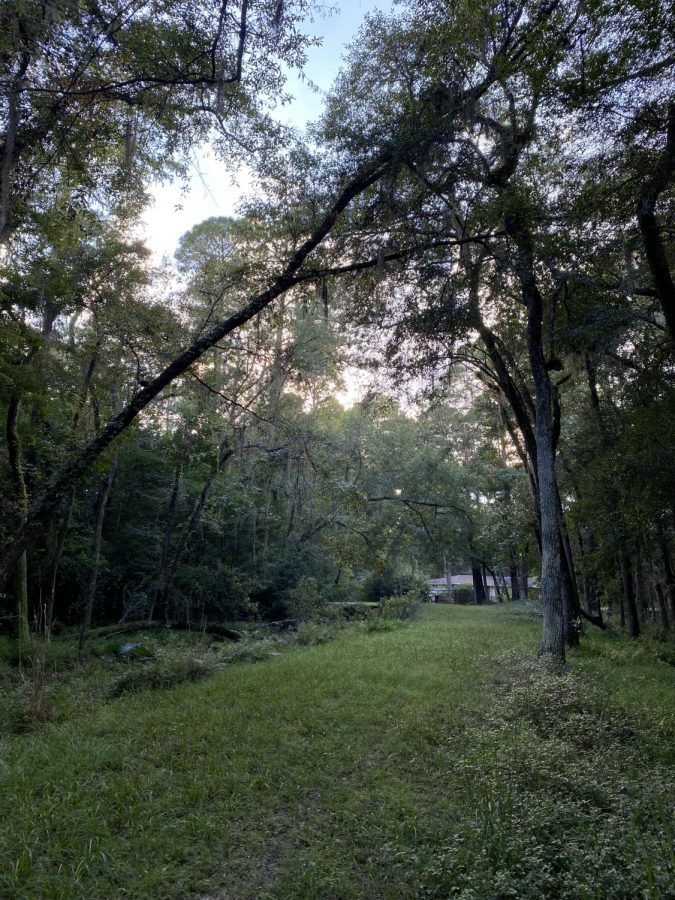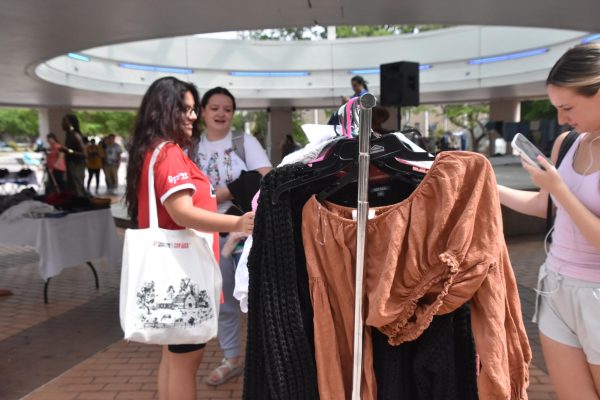GS professor fights for environment, protects Statesboro wetland
October 11, 2021
One biology professor at Georgia Southern purchased almost 12 acres of Statesboro wetlands, spending the last five years working to restore and protect the lands.
Lissa Leege purchased the land at auction from GS, in order to protect and restore the wetland from the invasive species that had taken over the property.
“If somebody had bought it and turned it into apartments or something, it could have destroyed this wetland that is so critical for the function of an ecosystem in the middle of town,” Leege said. “It is a unique situation to have this much green space in the middle of a city.”
A wetland must be at least seasonally inundated with water. Wetlands work like a sponge, absorbing extra waterflow from rain. Without wetlands, water would not have a spot to properly run off and would create flooding within the city, Leege said.
Invasive species like Japanese stiltgrass climb over neighboring plants, leaving native plants unable to get the needed sunlight and water to grow. Native plants in wetlands such as irises colonize around streambed, slowing rushing water and preventing erosion. The Japanese stiltgrass in the wetlands in Statesboro, Georgia largely choked out the irises, said Leege.
Undergraduate students have worked alongside Leege in the removal process of this invasive species, attempting to create space for native plant species to thrive. Undergraduate Dahja Wright, under the supervision of Leege, has an ongoing research study in avenues to best remove the Japanese stiltgrass in the wetland, including hand pulling, herbicides and weed whacking.
“The more stiltgrass that is out there, the less other species will be able to grow that are better for the wetland,” Wright said. “Hundreds of seeds can come from just one plant, and it’s so fast growing that it can be hard to control.”
Invasive species reduce the number of native species able to thrive in wetland environments, which also affects the number of native wildlife species able to dwell in these ecosystems, Eammon Leonard, a plant biologist in the Georgia Department of Natural Resources said.
The native ferns and irises in the wetland are perennial plants, meaning they only bloom seasonally. In order to bloom seasonally, these plants store carbon underground in the roots.

“Carbon storage is absolutely critical as we have increased carbon dioxide levels in the past 25 years to levels higher than humans have ever experienced,” Leege said. “Native plants can capture and store some of that carbon dioxide to help us turn around the worst effects of climate change.”
Local residents in Statesboro have noticed this project and inquired into Leege’s intentions with the wetland restoration.
“I think it’ll be great for wildlife in Statesboro, there aren’t many places like this in town,” said Jud Killgorn, a local resident and GS student.
This wetland restoration project is far from finished. Leege hopes to someday open the wetlands to the public to educate people on wetland environments, with plans to install a trail and educational signage.
Editor’s note: The above article was written by Caroline Boykin for her class.








Frank Hol • Oct 21, 2021 at 12:45 pm
Last year we donated 1400 native trees to Georgia Southern in Statesboro. Did some of those trees get used on this land? We teach and develop regenerative land projects. Recoveryecoag.org